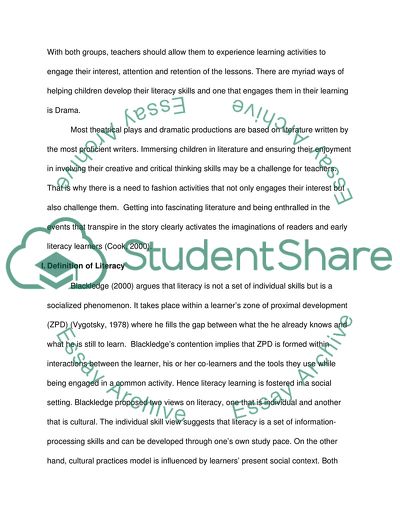Cite this document
(How Drama Can Be Used to Enhance the Development of Literacy Literature review Example | Topics and Well Written Essays - 4750 words, n.d.)
How Drama Can Be Used to Enhance the Development of Literacy Literature review Example | Topics and Well Written Essays - 4750 words. https://studentshare.org/education/1857507-how-can-drama-be-used-to-enhance-the-developement-of-literacy
How Drama Can Be Used to Enhance the Development of Literacy Literature review Example | Topics and Well Written Essays - 4750 words. https://studentshare.org/education/1857507-how-can-drama-be-used-to-enhance-the-developement-of-literacy
(How Drama Can Be Used to Enhance the Development of Literacy Literature Review Example | Topics and Well Written Essays - 4750 Words)
How Drama Can Be Used to Enhance the Development of Literacy Literature Review Example | Topics and Well Written Essays - 4750 Words. https://studentshare.org/education/1857507-how-can-drama-be-used-to-enhance-the-developement-of-literacy.
How Drama Can Be Used to Enhance the Development of Literacy Literature Review Example | Topics and Well Written Essays - 4750 Words. https://studentshare.org/education/1857507-how-can-drama-be-used-to-enhance-the-developement-of-literacy.
“How Drama Can Be Used to Enhance the Development of Literacy Literature Review Example | Topics and Well Written Essays - 4750 Words”. https://studentshare.org/education/1857507-how-can-drama-be-used-to-enhance-the-developement-of-literacy.


